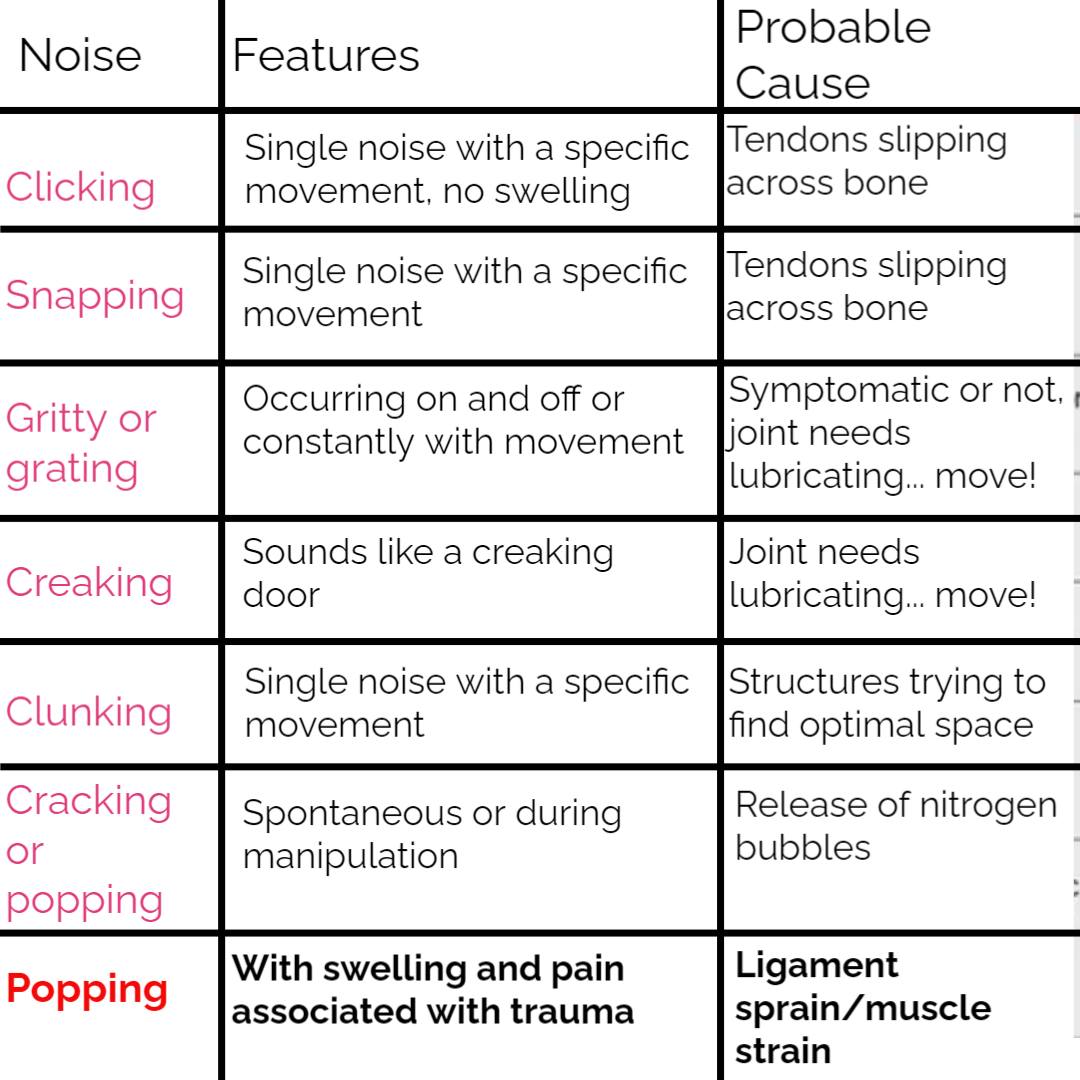- 07736 104738
- sam@medicalmassagelady.com
- Mon - Sat, 8:00 - 18:30
A common question from clients is “Why do my joints make that noise?”, and there may be a few different answers to that question. At some point, most of us have experienced something, whether it’s cracking knuckles, creaking knees or something else. When the sound is very noticeable it’s only natural to wonder if there is a problem with the joint, but often there is nothing to worry about if the noise isn’t accompanied by pain and inflammation.
WHY DOES A JOINT MAKE NOISE?
As we age, the cartilage in the joints will naturally wear away, causing rough edges which are more likely to make some noise, but noisy joints may also occur due to our movement patterns and postures, even how we lay in bed.
Repetitive exercises, for example, lifting weights, can cause a clicking or soft snapping sound with flexion and this is probably due to a tight tendon or muscle flicking over the bone. Complex anatomical areas such as the shoulders will also have a higher risk of crepitus, simply due to the amount of soft tissues involved.
Compressed nitrogen bubbles in the synovial fluid within the joint spaces, can also cause a cracking sound when the gas is released, for example, in the knuckles.

SHOULD I BE CONCERNED ABOUT MY NOISY JOINT?
Crepitus is not a cause of concern if there has been no injury or medical condition but if there is pain or inflammation this would indicate a more significant problem. It is normal for gas to accumulate in the synovial fluid, which lubricates the joint, and be released upon movement.Examples of common issues causing painful crepitus may be:-
• MENISCUS TEARS – if the cartilage that cushions the knee joint is torn, the edges may be caught during movement, not only causing inflammation and pain, but also popping or clicking noises
• PARTIAL SHOULDER DISLOCATION/SUBLUXATION - can cause a cracking sound due to the joint slipping out of place
• ARTHRITIS – while crepitus could simply be due to age related wear and tear, there could also be arthritic damage to the cartilage or bone, accompanied by inflammation and reduced range of motion, and a painful grinding
• PATELLOFEMORAL PAIN SYNDROME – a crunching sound combined with a dull aching can suggest an overuse injury
PREVENTING CREPITUS
If crepitus is accompanied by pain or inflammation then medical investigations should take place to determine the underlying cause and determine whether the problem is acute or chronic, and the inflammation should be treated.
Generally the best way to prevent, or to treat crepitus without pain, is to remain active, as movement will encourage the body’s natural lubrication, but also manual therapy and exercises to strengthen the surrounding muscles, will help to support the joint.




